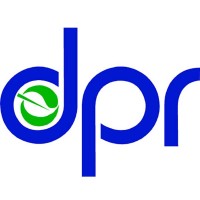Resources for Engagement
Resource Hub for Local Engagement
Welcome to the Resource Hub for Local Engagement (Resource Hub), a collection of information and tools to facilitate understanding and enhance engagement between County Agricultural Commissioners (CACs) and community members.
CACs are the enforcement partners of the California Department of Pesticide Regulation (DPR), enforcing pesticide laws and regulations at the local level. Enhanced community engagement will help CACs continue to protect workers, the general public, and the environment from pesticide harms (for example, through pesticide incident investigations). Enhanced engagement with local pesticide regulators will help community members better understand pesticide use requirements and how to report incidents and concerns promptly and effectively.
The Resource Hub serves as a centralized repository of information and resources for use by community members, CAC staff, and the public. These tools are intended to support the ongoing efforts of CAC offices and community-based organizations (CBOs) to provide accurate and transparent information and promote community engagement with county and state regulators.
The Resource Hub will be continuously updated as new documents and materials become available.
Engaging with communities and stakeholders is critical to our mission and efforts to protect human health and the environment by regulating pesticide sales and use across the state.
Training Resources for Local Engagement
The CAC-Community Engagement Workgroup developed these trainings to support meaningful engagement between community members and CAC offices. Contact EJ@cdpr.ca.gov for any questions or available resources to support these trainings.
Community Engagement Training for CACs and Staff
Engaging Effectively with CACs Training for Communities
Tools for CAC-Community Meetings
Meeting Resources
Below are organization and participation recommendations and resources for a variety of meetings, events, and engagement formats. This includes recommended ground rules that organizers can share with their participants to help promote productive meetings and more information about what CAC staff do.
Case Studies and Engagement Resources
Below are resources to support connections between CACs and communities, including ideas on how to start conversations and examples of positive working relationships.
Tools for Reporting Pesticide Problems
If you suspect a pesticide is being used improperly, notify your County Agricultural Commissioner’s office as soon as possible. You can use the resources below to find their phone number or call toll-free 1-87PestLine or (877) 378-5463. You can also request to communicate with your CAC in the language you prefer.
Find Your CAC Contact Information
Report Pesticide Incidents, Illnesses or Concerns
County Voicemail Template
Below is a county voicemail template for reporting pesticide concerns. Refer to the template script and audio files that include information about what to do if you have a pesticide-related concern.
Farmworker Resources
Learn about personal safety tips for farmworkers, such as taking off work shoes before entering one’s home. Learn about pesticide safety rules and protections that apply statewide for farmworkers. Find out what pesticides are and what steps to take if you were exposed to a pesticide. And, learn about the state regulations that employers must follow for the safety of pesticide workers.
County Specific Farmworker Outreach Materials
Examples of business cards, programs, and hotlines with resources for farmworkers.
Santa Cruz County Examples
Monterey County Examples
Ventura County Resource Examples
Tools for Language Access
Learn about how you can communicate with your County Agricultural Commissioner’s Office in the language you prefer. Learn about guidance on providing language access services to members of the public with limited English proficiency. Learn about DPR’s recommendations for translating pesticide terms:
Resources and Best Practices
Pilot Language Access Hub
We received funding from the US Environmental Protection Agency (EPA) to develop a pilot “Language Access Hub” for County Agricultural Commissioners (CACs). Starting February 2024, CACs and their staff have access to a document translation service and a 24/7 interpretation call line for their pesticide use enforcement activities.
Glossaries for Pesticide and Health Terms
Find an interpreter
Media Resources
View videos and links below for information to share with your networks on pesticide regulation, pesticide safety, worker rights, and reporting pesticide incidents. For the Public Service Announcements, you can email EJ@cdpr.ca.gov to request any MP3 file in Hmong, Mixteco, Punjabi, Purépecha, Spanish, Triqui, or Zapoteco.
Pesticide Registration Process
Pesticide Registration Process – Spanish
How to Report a Pesticide Incident
How to Report a Pesticide Incident – Spanish
Resource Hub Development
To provide and develop these materials, the CAC-Community Engagement Work Group began meeting in July 2022, with support from DPR and facilitation from the UC Davis Center for Regional Change. The intent of this group is to support CACs and local communities to have conversations, listen, and collaborate with each other. The group includes members from community-based, CAC, and government organizations, bringing different backgrounds and experiences from across California.
Sign Up for Email Updates
Keep in the loop by subscribing to one or more of our email distribution lists.
*= Required Field
Still have a Question or Need More Information?
Please contact us with questions or visit the Contact Us page on our website to connect with other programs at DPR.
Email: EJ@cdpr.ca.gov
